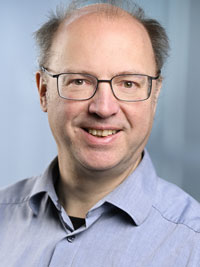Soils are one of the central foundations for food, climate, and ecosystems – yet their condition is deteriorating worldwide. In the journal One Earth, an international framework has now been published that systematically links soil biodiversity, ecosystem services, and societal needs. With contributions from Angela Sessitsch, Head of Center Health & Bioresources, and Markus Gorfer, Scientist at AIT, the concept provides a scientifically sound basis for making the importance of healthy soils for food security, the environment, and human health measurable.
Threats to soil biodiversity
It is estimated that around 60% of global biodiversity lives in the soil – from microorganisms such as bacteria and fungi to small animals such as nematodes or insect larvae. They regulate nutrient cycles, secure agricultural production, and contribute significantly to climate regulation. However, intensive use, chemical pollution, and climate change are putting this underground diversity under massive pressure. Researchers warn that the loss of soil biodiversity can have not only ecological but also direct consequences for human health – for example through lower yields, poorer nutrition, or greater susceptibility to disease.
New framework as a solution
The newly presented Soil Biodiversity and Well-being Framework (SBWF) – a scientific conceptual model – creates for the first time a comprehensive architecture that links soil resources with ecological, economic, and social indicators. This makes it possible to trace the interactions between soil condition, ecosystem services, and societal benefits. “We need an instrument that not only describes the enormous importance of soil biodiversity scientifically but also makes it tangible in economic and societal terms,” emphasizes Angela Sessitsch. Only such an approach can enable sustainable soil management on a large scale – and thus ensure long-term food security and ecological stability. Markus Gorfer also highlights the practical dimension: “The interaction between microorganisms and plants – up to and including pathogenic fungi – shows how sensitively soil ecosystems react.” An integrative framework makes it possible to better understand these complex interrelationships and to identify risks for agriculture and the environment at an early stage.
AIT expertise in context
The Competence Unit Bioresources at AIT has been researching the role of microorganisms in agricultural and natural systems for many years. Using molecular biological methods and microbial databases, it contributes to making the functioning of complex ecosystems visible. The new framework fits seamlessly into this context, as it links scientific knowledge with assessment models and policy instruments.
The operationalization of the framework opens up a wide range of possibilities: from the development of robust indicators for soil policy, to the involvement of farmers in monitoring systems, to the use of AI-based models for cause-effect analyses. This creates a scientific foundation for securing soils as a natural resource in the long term and for taking greater account of their contribution to nutrition, health, and societal resilience.




